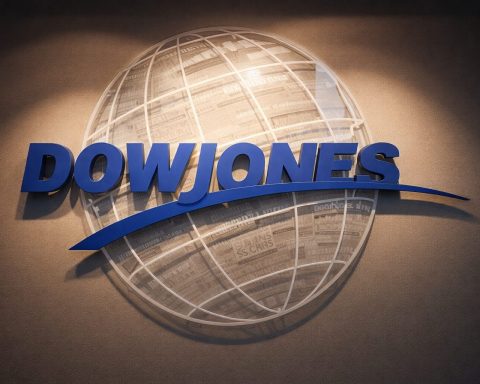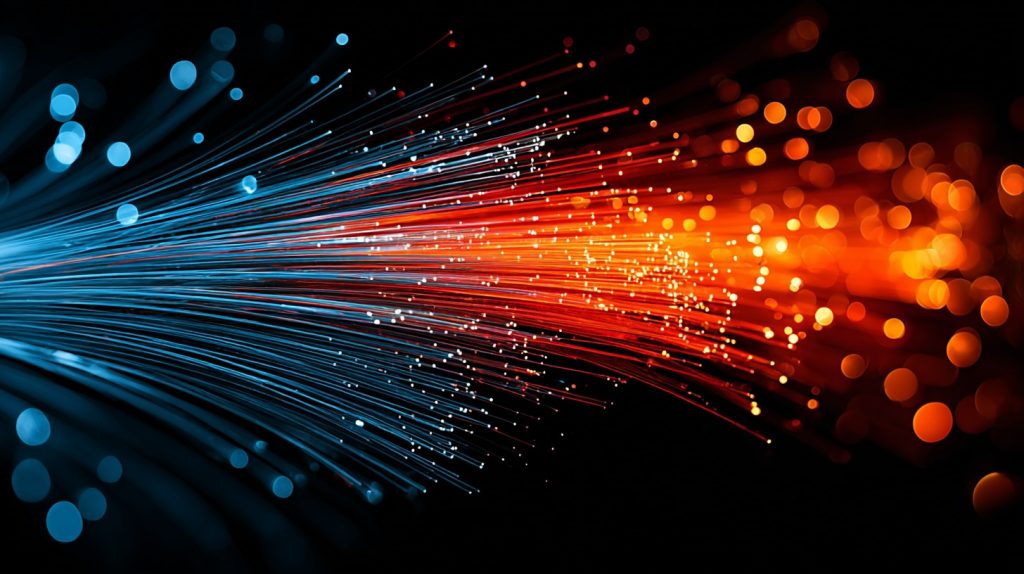- By mid-2023, fiber-to-the-premises (FTTP) passed 75.4% of Polish homes, making FTTP the most prevalent fixed broadband technology.
- By mid-2023 rural FTTP coverage reached 56.3% of rural homes, overtaking DSL as the largest rural broadband technology.
- National fixed broadband coverage stood at 86.9% of households, with rural coverage at 74.0% by mid-2023.
- In October 2023, Poland concluded its 3.6 GHz 5G spectrum auction, granting 100 MHz licenses to all four operators and obligating 5G to deliver at least 95 Mbps to 90% of the territory and 99% of households.
- By mid-2023, 58.5% of rural households had 5G coverage, aided by rapid deployment on lower bands.
- SpaceX’s Starlink began service in Poland in 2021 and, by 2023, covers the entire country with speeds of 50–200 Mbps and latency of 20–40 ms.
- A Starlink kit costs about 2,300 PLN upfront, with the service around 260 PLN per month.
- About 4.2 million Polish households are covered by open-access fiber networks that allow multiple ISPs to use the same infrastructure as of 2023.
- Orange Polska remains the largest fixed broadband operator with about 25.5% of fixed broadband revenues in 2023, while Play/UPC, Vectra, and dozens of smaller ISPs share the rest of the market (with around 36.2% of subscribers in the “other” category).
- Poland’s broadband-related government and EU funding totals include the EU’s POPC €2.57B (with over €1B for digital connectivity), the 2021–2027 FERC about €2B, the National Recovery and Resilience Plan (RRP) €1.4B, and the OSE network connecting about 19,500 schools with free 100 Mbps+ internet.
Poland is experiencing a rapid transformation in its internet landscape, marked by surging broadband speeds and expanding access even in remote villages. Once lagging behind its Western European peers in connectivity, the country is now closing the gap through aggressive fiber-optic rollout, near-ubiquitous mobile broadband, and even the adoption of cutting-edge satellite internet services. This report provides a comprehensive overview of Poland’s internet infrastructure – from the fiber lines beneath city streets to Starlink satellites overhead – along with key statistics on penetration, speed, affordability, regulatory developments, government initiatives, EU comparisons, and the major providers driving this internet boom.
Urban vs. Rural Connectivity: Fiber, DSL and Mobile Networks
Fiber and DSL Broadband – The Urban-Rural Divide: Poland’s fixed broadband infrastructure has advanced significantly in recent years, but stark differences remain between urban and rural areas. In cities and large towns, high-speed internet options like fiber-optic (FTTH/B) and upgraded cable networks are widely available. In fact, by mid-2023 fiber-to-the-premises (FTTP) had become the most prevalent fixed broadband technology in Poland, passing 75.4% of all homes [1]. This represents a dramatic expansion – FTTP coverage jumped nearly 16 percentage points in one year, reflecting accelerated deployment in both new and existing neighborhoods [2]. Legacy DSL (copper telephone line) networks, while still present, continue to shrink in relevance; many urban DSL lines have been replaced or overbuilt by fiber and modern VDSL upgrades [3]. Cable operators have also modernized infrastructure in cities – virtually 100% of Poland’s cable TV footprint has been upgraded to the DOCSIS 3.1 standard for gigabit-capable service [4]. As a result, a vast majority of city-dwelling households can access high-speed fixed internet, often 1 Gbps or faster, through fiber or cable providers.
Rural broadband access, however, has historically been more limited – but it is improving rapidly. By mid-2023, 74.0% of rural households had access to fixed broadband, up 5.2 percentage points from a year prior [5]. This still trails urban coverage (Poland’s national average coverage is 86.9%) and was the third-lowest fixed broadband coverage rate among EU countries [6]. The gap stems from sparse DSL telephony networks and low cable presence in the countryside. Notably, Poland’s old copper telephone network did not reach many remote areas – Poland’s DSL coverage is far below the EU average (by over 46 percentage points) [7], leaving some villages historically dependent on slow wireless links or nothing at all. However, fiber optic rollout has aggressively extended into rural Poland thanks to government and EU-funded projects. In a striking development, rural fiber now exceeds rural DSL: by mid-2023, FTTP networks passed 56.3% of rural homes, overtaking DSL to become the largest rural broadband technology [8]. This rural fiber coverage jumped 24.3 points in just one year [9], meaning many villages that lacked any wired broadband a few years ago are now connected with gigabit-capable fiber. Rural cable remains rare (only ~1.7% of rural homes are passed by any cable network) [10], so fiber deployments – often subsidized – are doing the heavy lifting in bridging the rural digital divide. The result is that Poland has significantly narrowed the urban-rural gap in high-speed access. The table below summarizes the coverage disparities:
Broadband Coverage in Poland (mid-2023): Urban vs Rural [11] [12]
| Coverage Metric | Nationwide | Rural Areas |
|---|---|---|
| Fixed broadband (any tech) | 86.9% of households [13] | 74.0% [14] |
| FTTP fiber coverage | 75.4% of households [15] | 56.3% [16] |
| 5G mobile coverage (pop.) | ~63% of population [17] [18] (2022) | 58.5% of households [19] |
Table: Broadband network coverage in Poland, comparing national versus rural availability. “Fixed broadband” includes any wired or fixed wireless access; 5G coverage is given as population coverage nationally (in 2022) and rural household coverage (mid-2023).
4G/5G Mobile Connectivity Across Poland: On the wireless side, Poland enjoys near-universal mobile broadband coverage in populated areas, although the latest 5G technology is still being rolled out. 4G/LTE networks blanket virtually 100% of the population (as of 2023) [20], ensuring that even in small villages most people have at least a mobile internet option. Poland was an early leader in widespread 3G/4G adoption last decade, and today Poles heavily rely on mobile data – either via smartphones or home LTE routers – especially in areas lacking fast fixed lines. The country’s four major mobile operators (Orange, T-Mobile, Plus, and Play) have all built extensive 4G networks covering rural and urban areas alike. This has been a vital stopgap for rural internet users: where fiber or DSL was absent, 4G filled the void, allowing high basic internet penetration even before wired infrastructure arrived.
When it comes to 5G, Poland’s rollout has been steady but slower than some EU peers due to regulatory delays. As of 2022, an estimated 63% of populated areas had 5G coverage in Poland – well below the EU average of 81% [21]. This is largely because Poland was late to allocate the prime 3.4–3.8 GHz mid-band spectrum for 5G. A planned 5G auction was delayed multiple times (initially by a cybersecurity law dispute and the pandemic), leaving Polish operators to launch “5G” using refarmed LTE bands at 2100 MHz and others, which offer broad coverage but only modest improvements in speed [22]. Despite this handicap, operators aggressively expanded 5G on whatever frequencies were available. By mid-2023, an impressive 58.5% of rural households were within 5G coverage (vs essentially 0% a year earlier) thanks to rapid deployment on lower bands [23]. This indicates that even in rural Poland, more than half of homes can get a 5G signal, though often at “4G-like” speeds due to the spectrum constraints. The turning point came in October 2023, when Poland finally concluded its auction of the 3.6 GHz band for 5G. All four mobile operators obtained 100 MHz licenses to deploy true high-speed 5G, paying a total of PLN 1.92 billion [24]. As part of the auction conditions, the winners must ensure 5G service of at least 95 Mb/s reaches 90% of Poland’s territory and 99% of households [25]. With these mid-band frequencies now in hand, operators in 2024–2025 are investing to upgrade infrastructure and densify networks. Early results are promising – by mid-2024, Orange’s new 5G spectrum was already live for about 40% of Poland’s population [26]. Overall, Poland’s cities should see a robust 5G experience comparable to Western Europe within 2025, while rural 5G coverage will continue to improve under the coverage mandates. Thanks to the foundation of ubiquitous 4G, Poland’s mobile broadband usage is high nationwide, even if 5G speeds in some areas will take another year or two to fully materialize.
Internet Penetration, Speeds and Affordability
High Internet Penetration: Internet access is now nearly universal in Poland, with usage continuing to climb each year. As of 2024, 95.9% of Polish households have an internet connection of some kind [27] – an all-time high, and a 2.6 percentage point increase from the prior year. This means virtually all families in urban areas and the vast majority in rural areas are online. (By comparison, the overall EU average is around 93% of households, so Poland has caught up in this metric.) The small remaining gap is largely among older, single-person, or low-income households. Indeed, when looking at individuals, about 88.4% of the total population uses the internet [28], indicating that most who want access have it – though a portion of the elderly still remain offline. There is a generational divide: nearly 100% of Poles under 35 are internet users, but only 25% of those aged 65+ were online as of recent surveys [29]. Efforts are underway to improve digital inclusion for seniors, but as of now Poland’s digital user base skews young. On the positive side, virtually 99.9% of households with children have internet at home [30], as do 98.7% of businesses [31] – reflecting how essential connectivity has become for families, education, and commerce.
Faster Speeds Than Ever: The quality of Polish internet connections – in terms of bandwidth – has improved dramatically. Average speeds have surged in recent years due to fiber and DOCSIS deployments. As of early 2024, Poland’s median fixed broadband download speed is about 152 Mbps (and ~45 Mbps upload) [32], according to Speedtest data, which is a very robust performance (on par with or better than some Western European countries). This is a far cry from a decade ago when most Polish home connections were DSL lines under 10 Mbps. Now, over 65% of households subscribe to at least a 100 Mbps broadband plan [33], comfortably above the EU average of 55% – suggesting Poles are embracing high-bandwidth services [34]. Fiber-to-the-home customers often enjoy 300 Mbps or 1 Gbps packages, and cable users commonly have 150–600 Mbps service after recent upgrades. Even on mobile, speeds are solid: 4G connections typically deliver 20–40 Mbps, and early 5G can exceed 100 Mbps in ideal conditions. Poland’s internet “boom” is thus not just in reach but in raw speed – enabling streaming, remote work, cloud gaming and other data-hungry applications to flourish.
Affordable Data – A Competitive Market: Internet service in Poland is relatively affordable, thanks to intense competition and regulatory pressure. Fixed broadband prices, when adjusted for purchasing power, are below the European average [35]. For example, a high-speed fiber plan (e.g. 300 Mbps) in a Polish city might cost around 50–70 PLN per month (approximately $12–$17), which is considered good value in Europe. The market offers plenty of choice between dozens of ISPs, which has kept prices in check. On the mobile side, Poland stands out as one of the cheapest mobile data markets in the EU. A 2021 EU pricing study found Poland (along with Romania, Spain, and Estonia) among the least expensive countries for mobile broadband in Europe [36]. It is common to see mobile plans with 10–30 GB of data (or even unlimited data) for the equivalent of $10 or less per month, which has driven heavy mobile internet usage. While Polish incomes are lower than Western Europe, these low prices make internet access widely attainable. According to the European Commission, Poland’s broadband cost competitiveness is strong – all standard baskets of broadband/phone service in Poland are priced below EU averages [37]. This affordability has been crucial to achieving near-universal adoption. The downside, however, is that low margins can constrain operators’ ability to invest; thus, public subsidies have played a role in funding rural networks (more on that below). But for consumers, Poland’s internet boom has thankfully not come with a hefty price tag – in fact, Poles today pay less (in PPP terms) for more bandwidth than ever before.
Satellite Internet: Starlink and Other Options in Poland
Even as terrestrial networks expand, satellite internet has emerged as a niche but important piece of Poland’s connectivity puzzle – especially for areas that remain off the fiber grid. Historically, satellite broadband in Poland was provided by geostationary satellites (e.g. services via Eutelsat/SES) which offered very limited speeds (a few Mbps) and high latency (>600 ms). These legacy options saw minimal uptake, often only by remote users with no alternative. However, the advent of SpaceX’s Starlink low-earth orbit (LEO) satellite service has generated new interest and subscriber growth in Poland’s countryside. Starlink began offering service in Poland around 2021, and as of 2023 it covers the entire country with a dense constellation of LEO satellites. Unlike old satellite internet, Starlink delivers true broadband: users in Poland report download speeds of 50–200 Mbps with only ~20–40 ms latency, comparable to a DSL or 4G connection [38]. This has been life-changing for rural homes that were previously stuck with dial-up, sub-1 Mbps radio links, or no service at all. Starlink’s ability to provide fast, reliable connectivity “anywhere you live” – even on a remote farm – is a game-changer for digital inclusion in hard-to-reach areas [39]. It effectively bypasses the need for local infrastructure, beaming internet from the sky.
That said, satellite broadband in Poland remains a small niche segment, mostly due to cost. A Starlink kit (dish + router) costs on the order of 2,300 PLN ($500) upfront, and the service is around 260 PLN ($60) per month – far more expensive than a fiber or LTE subscription. Thus, it is chosen primarily by those who genuinely lack other options (or perhaps tech enthusiasts). Polish regulators do not publish exact Starlink user counts, but anecdotal evidence suggests a few tens of thousands of subscribers nationally. In fact, in 2023 Poland’s telecom regulator UKE noted that Starlink had gained enough users to rank among the top ten fixed internet providers in the country [40]. This is remarkable for a newcomer – indicating that in the span of a couple years, Starlink has outrun many small local ISPs in subscriber numbers. It speaks to the latent demand in underserved rural pockets. Starlink has also been strategically important beyond Poland’s borders: the Polish government has purchased over 20,000 Starlink terminals to donate to Ukraine since 2022, spending roughly 323 million PLN to support connectivity in the war-torn country [41] [42]. While those terminals are for Ukraine’s use, the initiative underscores Poland’s recognition of Starlink’s value in emergency and remote scenarios.
Aside from Starlink, other satellite options in Poland include services like Viasat’s KA-SAT (branded as Tooway or Konnect) and emerging LEO constellations under development. Viasat/Eutelsat offer GEO satellite plans in Poland, but with only up to ~50 Mbps speeds and high latency, their uptake has been very limited. OneWeb, another LEO network, is not yet offering consumer broadband in Poland (it has focused on enterprise and mobile-backhaul markets so far). Looking ahead, the EU’s own IRIS² satellite constellation, planned for later this decade, may provide additional satellite broadband capacity over Europe with a public-private model. For now, Starlink dominates the satellite internet scene in Poland, effectively creating a new tier of broadband for those beyond the reach of fiber or 4G. Regulators have welcomed it as an augmentation to national broadband goals, though they also caution that it’s a complement – not a replacement – for terrestrial networks due to its cost and capacity limits. In summary, satellite internet has moved from a last-resort afterthought to a viable (if premium) solution ensuring that even Poland’s remotest corners can partake in the internet boom.
Regulatory and Policy Framework: Deployment and Competition
Poland’s regulatory environment has been actively shaped to accelerate broadband deployment and maintain competition. The Office of Electronic Communications (UKE), Poland’s telecom regulator, plays a central role in this. UKE has enforced pro-competitive measures such as open wholesale access to networks: as of 2023, about 4.2 million Polish households are covered by open-access fiber networks that allow multiple ISPs to use the same infrastructure [43]. This includes the incumbent’s (Orange’s) fiber as well as subsidized regional networks – smaller providers can lease capacity, which prevents any single operator from monopolizing service in a given area. Sharing of telecom infrastructure (like ducts, poles, and towers) is also mandated to reduce barriers for new entrants. UKE provides model agreements and guidance to streamline such sharing [44]. Thanks to these policies, Poland’s broadband market remains quite competitive (as detailed in the next section), with dozens of active operators and relatively low consumer prices.
Another regulatory focus has been reducing red tape for network rollout. Following EU guidelines (the Connectivity Toolbox), Poland has implemented reforms to speed up permit granting for broadband builds [45]. Procedures for obtaining access to properties and public land for fiber deployment have been simplified, and a “Single Information Point” portal helps operators see where infrastructure (like ducts or fiber) already exists to avoid duplicate construction [46]. The government has also launched Internet.gov.pl, a public portal where residents can report their need for broadband or mark buildings as unserved, and where providers can see demand to plan investments [47]. This crowdsourced approach aims to connect market interest with network planning, nudging ISPs to build out to areas with active demand.
Poland’s regulatory framework also closely follows EU telecom rules. (Notably, Poland was slightly delayed in transposing the latest EU Electronic Communications Code, leading to some interim uncertainty, but the main principles of competition and consumer protection are in place.) Network neutrality is observed in Poland in line with EU law, and there are no significant internet censorship practices except court-ordered blocks of illegal content. On the spectrum side, after the hiccups with 5G spectrum auctions, regulators have now gotten back on track: the 3.6 GHz 5G auction in 2023 was successfully completed [48], and a separate process is beginning for the 700 MHz band (for wide-area 5G coverage) [49]. One lingering policy question is the role of “high-risk” vendors (like Huawei) in 5G networks – a cybersecurity law to potentially exclude such vendors was debated but not passed before the 2023 elections [50]. The new government in 2024 is expected to revisit this, which could affect mobile operators’ upgrade plans if certain equipment must be replaced [51].
At a strategic level, Poland’s National Broadband Plan (Narodowy Plan Szerokopasmowy) sets ambitious targets and aligns with EU digital goals. Updated in 2020, the plan aims for universal access to at least 100 Mbps by end of 2025, upgradable to gigabit, and full 5G coverage of main cities and transport corridors [52]. These targets feed into the EU’s “Gigabit Society” and Digital Decade objectives. To reach them, the government has facilitated significant funding (detailed next section) and has signaled support for new technologies (such as 5G private networks – companies can apply for local licenses in 3.8–4.2 GHz to run their own 5G networks, an initiative to spur innovation in industries [53]). The regulatory stance is generally technology-neutral: fiber is preferred for its capacity, but fixed-wireless, 5G, and satellite are all considered part of the solution mix for 100% coverage. In summary, Poland’s policymakers and regulators have been actively lowering barriers to deployment and ensuring that the broadband boom benefits from healthy competition rather than monopoly. This environment has encouraged both incumbent and alternative operators to invest in network expansion, knowing that demand is high and the policy support is strong.
Government Programs and Investments in Broadband
Recognizing that market forces alone might not deliver broadband to every last village or achieve gigabit speeds quickly enough, the Polish government – often with EU support – has launched multiple programs to boost internet infrastructure. A cornerstone has been the use of EU structural funds. Under the 2014–2020 EU budget, Poland implemented the Operational Program “Digital Poland” (POPC) with a total budget of €2.57 billion, of which over €1 billion was dedicated specifically to digital connectivity projects [54]. These funds co-financed the extension of fiber-optic backbones and access networks in underserved areas. Through POPC, hundreds of thousands of rural households gained fiber broadband access for the first time, as telecom operators won tenders to build networks in “white spots” (areas with no prior high-speed internet). The success of this is evident in the rural fiber coverage jump mentioned earlier. For the 2021–2027 EU budget cycle, a follow-on program called European Funds for Digital Development (FERC) is in place with about €2 billion allocated, continuing the mission of building a gigabit society in Poland [55] [56]. These investments target the remaining gaps, such as sparsely populated eastern regions, aiming to bring at least 100 Mbps (and upgradable to 1 Gbps) to every household by 2025.
In addition to EU funds, Poland’s National Recovery and Resilience Plan (RRP) – funded by the EU’s post-COVID recovery facility – earmarks €1.4 billion for high-speed internet expansion [57]. This RRP investment (planned through the mid-2020s) is focused on building resilient digital infrastructure, including connecting socio-economic drivers like schools, public offices, and healthcare facilities to gigabit fiber. The idea is that by connecting these anchor institutions (many of which are in smaller towns), the surrounding communities will more easily be served. Indeed, one flagship initiative, the Nationwide Education Network (Ogólnopolska Sieć Edukacyjna, OSE), has already connected about 19,500 schools with free 100 Mbps (or faster) internet access [58]. OSE not only provides connectivity to every school in Poland, but also bundles cybersecurity and digital tools for education – ensuring that rural schools are not left behind the cities in terms of online resources. The OSE fiber lines often become trunks that local ISPs can tap into to serve homes along the route, multiplying the benefit.
On the mobile front, the government facilitated the 5G auction and is co-funding some 5G innovation testbeds (though mobile networks are largely financed by the operators themselves). One area of public investment is in 5G for transport corridors – aligning with the EU goal to have uninterrupted 5G on major highways and rail lines. Pilot projects to install 5G infrastructure along important routes (for future connected vehicles, etc.) have received government support. Additionally, Poland has been evaluating the idea of a wholesale 5G network in 700 MHz (a concept of a single infrastructure for coverage in that band), but plans remain uncertain pending further regulatory review.
It’s also worth noting that Polish authorities have updated laws to ease broadband deployment – effectively an “investment in policy.” For example, changes in building codes require new buildings to be fiber-ready and mandate that developers allow telecom access, which lowers cost for ISPs to wire new housing estates. There are also tax incentives for telecom investments in certain economically lagging regions.
All told, when combining EU and national funding, Poland is investing billions of euros (including about PLN 11 billion through 2026 by one estimate) to expand broadband coverage [59]. These expenditures have paid off in the form of that rapidly rising coverage and speed statistics. Government programs continue to play a critical role in areas that are not immediately profitable for private operators – ensuring that the digital divide is steadily shrinking. By 2025, Poland aims to essentially fulfill the promise of universal high-speed internet, a goal that seemed very ambitious a decade ago but is now within sight thanks to these concerted efforts.
Poland vs. Other EU Countries: Digital Inclusion and Rankings
Compared to its European Union peers, Poland presents a mixed picture on digital inclusion – with notable improvements in connectivity metrics but some persistent gaps. In the European Commission’s Digital Economy and Society Index (DESI), Poland has historically ranked in the lower tier. For example, in DESI 2022 Poland was 25th out of 27 EU countries on the “Connectivity” dimension [60]. It had the third-lowest overall fixed broadband coverage in the EU [61], as mentioned, largely due to the incomplete DSL network in rural areas. Only Bulgaria and Greece ranked lower in connectivity at that time. However, Poland is quickly catching up. The massive surge in fiber deployment actually put Poland above the EU average in FTTH coverage by 2023 – 75% of Polish homes are passed by fiber vs about 64% EU-wide [62]. Likewise, Poland’s coverage of “very high capacity networks” (VHCN – meaning gigabit-capable fiber or cable) reached 81% in 2023, nearly on par with the EU average (~85%) and up from just 65% in 2020 [63] [64]. In some measures Poland now leads: for instance, 65% of Polish households subscribed to 100+ Mbps service as of 2022, beating the EU average of 55% [65]. This indicates Polish consumers have been quick to adopt fast internet where it’s available. So in terms of pure infrastructure Poland went from laggard to roughly middle-of-pack, if not better, in a very short time.
Where Poland still lags is in full ubiquity and certain demographic inclusions. Rural broadband coverage, while vastly improved, is still behind Western European rural coverage (many EU countries approach 90-100% rural coverage through a combination of DSL and fiber, whereas Poland is at 74% for fixed broadband in rural areas [66]). The 5G rollout delay also puts Poland a bit behind countries like Finland or Italy that already have 80–100% 5G population coverage; Poland’s 63% (2022) will improve now post-auction, but it’s a year or two late [67]. Moreover, Poland’s digital skills and usage indicators trail EU averages. Only 43% of Polish individuals have basic digital skills, versus about 55% EU-wide [68] [69]. This is linked to education and the older population not being online – a societal issue that infrastructure alone doesn’t solve. Poland ranks 24th in the EU on the “Human Capital” (skills) dimension of DESI [70]. E-government usage and integration of digital tech in businesses are also somewhat behind the EU average, though improving [71] [72].
In terms of affordability and competition, Poland actually stands out positively. As noted, mobile data prices are among the lowest in Europe [73], and broadband prices are below average [74]. This contributes to Poland having a high proportion of income groups able to afford internet access, more so than some high-cost countries where price can be a barrier. For example, countries like Denmark or Ireland have near-total coverage but very high subscription costs; Poland, by contrast, offers cheaper plans, which is a form of digital inclusion often overlooked. According to the Inclusive Internet Index, which considers affordability, Poland scores quite well in affordability and availability categories (though less so in digital skills).
Regionally, within Central-Eastern Europe, Poland is comparable or slightly behind some neighbors in connectivity. Lithuania and Latvia, for instance, have extremely high fiber coverage and also rank well in DESI connectivity. Romania has very fast internet in cities (with inexpensive fiber) but struggles in rural inclusion similar to Poland. The Czech Republic and Slovakia were earlier with 5G auctions, so they have a bit more 5G coverage than Poland so far. Germany – a Western neighbor – interestingly has lower fiber coverage than Poland but compensates with nearly universal legacy broadband coverage (cable/DSL) and thus ranks higher due to fewer gaps. In essence, Poland’s profile is fast improving: it went from a digital straggler to a country that, by 2025, may well match the EU average on most connectivity metrics, thanks to the fiber boom and policy push. The country’s main challenge now is ensuring that the remaining offline population (mostly elderly and rural poor) get online and have the skills to benefit – a challenge many EU countries face, but more acute in Poland given the larger rural populace (about 40% of Poles live in rural areas, one of the highest shares in the EU) [75].
In summary, Poland’s digital inclusion relative to the EU is a story of catching up: deficits in coverage are being erased with remarkable speed, cost barriers are low, and usage is broadening, yet improving human capital (skills, education) is the next frontier. Poland has aligned itself with EU 2030 targets (like “Gigabit for Everyone, 5G Everywhere” by 2030), and if the current pace continues, it is on track to meet those goals not long after its wealthier counterparts. The “internet boom” in Poland is thus not only raising the country’s standing in European rankings, but more importantly, is bringing world-class connectivity to communities that only a few years ago lacked basic internet – a significant stride for digital inclusion in the EU’s east.
Key Internet Providers and Market Structure
Poland’s internet service provider (ISP) market is dynamic and highly competitive, featuring a mix of large national players and hundreds of local operators. No single company dominates the broadband sector – the leading provider, Orange Polska, has roughly 23–25% of the fixed internet market, and the rest is fragmented among many others. Orange is the former state telecom incumbent and remains the only truly nationwide fixed-line operator, offering DSL and fiber (as well as being a mobile operator). Orange’s national fiber network (often built over its old telephone infrastructure) has been a backbone of Poland’s broadband expansion, and the company has opened its fiber wholesale to competitors in many areas. As of 2023, Orange maintained its leadership for the third year with about 25.5% share of fixed broadband revenues (around 2.9 million retail broadband subscribers). It has leveraged that position to heavily invest in fiber – Orange alone accounts for millions of the fiber homes passed across Poland.
The second tier of major ISPs includes cable and mobile operators: Vectra and UPC (now part of Play). Vectra is Poland’s largest cable TV operator, which acquired Multimedia Polska in 2020 to broaden its reach [76]. Vectra/Multimedia together serve many cities and towns (particularly for cable broadband) and likely command on the order of 15–20% of the fixed broadband market. UPC Poland, formerly the #1 cable operator, was acquired in 2022 by the mobile carrier Play (owned by France’s Iliad Group). By mid-2023, UPC was fully merged into Play and now operates under the Play brand for fixed services [77]. The combined Play/UPC has a significant presence (UPC had ~1.3 million broadband customers), giving Play a strong position in fixed broadband to complement its large mobile subscriber base. Another key player is the Cyfrowy Polsat (Polsat Plus) Group, which owns Plus (a mobile operator that also offers fixed-wireless LTE broadband) and Netia, one of the largest alternative fixed carriers. Netia has about 0.8–0.9 million broadband lines (fiber and older copper) and focuses on metropolitan areas; Plus provides wireless home internet via 4G/5G to many rural customers, and together the group has a sizable share. However, Polsat has kept Plus and Netia as separate brands so far [78], targeting different segments (Plus for wireless, Netia for fiber).
Two other mobile operators, Orange and T-Mobile, also offer fixed broadband solutions: Orange via its own network, and T-Mobile Polska by renting wholesale access on others’ fiber networks (T-Mobile sells home internet over fiber in big cities through deals with Orange and others). T-Mobile’s fixed customer base is smaller but growing as it leverages its mobile customer relationships to upsell home broadband (including 5G-based home internet).
What truly defines the Polish market is the presence of many regional and local ISPs. In fact, about 36.2% of all fixed broadband subscribers are with “other” small ISPs outside the big nationwide players [79]. This long tail includes city cable operators (e.g. Toya in Łódź), municipal networks, and countless mom-and-pop fiber providers that have sprung up over the years (some with EU funding support). In the fiber segment specifically, nearly 45.6% of FTTH customers are served by these smaller local providers [80], not the big telcos [81]. This indicates a highly decentralized market structure – unlike many countries where the incumbent and a couple of big ISPs control almost everything. In Poland, if you live in a medium-sized town or suburban area, there’s a good chance a local company or cooperative laid fiber to your building and competes with the larger firms. This diversity keeps prices competitive and often means more personalized service, though it also leads to market consolidation over time (larger players have been acquiring some of the successful local ISPs).
It’s also notable that SpaceX Starlink has now entered the ranks of significant providers. While tiny in share, Starlink’s inclusion in UKE’s top-10 list of fixed internet providers in 2023 shows it has captured a segment of users (likely a few percent or less) who are mostly in remote rural areas [82]. Starlink’s presence puts additional competitive pressure on terrestrial ISPs to serve those hard-to-reach customers or risk losing them to the satellite option.
In summary, Poland’s ISP landscape can be characterized as competitive and pluralistic. Orange Polska remains the single biggest player but with only about a quarter of the market. Cable companies (Vectra, Play/UPC) and the Polsat Plus Group each hold strong shares in the teens. T-Mobile and some midsize ISPs (like INEA in Greater Poland region, which has ~3% market share [83]) round out the medium players. Then a large collective of local ISPs accounts for roughly one-third of all connections [84]. This fragmentation has benefits for consumers (choice and low prices) and has spurred innovation (many local fiber projects), although it also means the market may undergo further consolidation in coming years. The regulator’s role in enabling wholesale access has allowed even small ISPs to thrive using incumbent infrastructure, preserving this diverse ecosystem. As Poland’s internet boom continues, the major providers are racing to sign up the remaining customers still on slow connections. The competitive dynamic – Musk’s satellites vs. Solorz’s (Polsat) wireless vs. Play’s cable vs. Orange’s fiber, as one newspaper quipped [85] – ensures that Poland’s internet users will continue to see better service and value. In the end, the biggest winner of this multi-sided contest is the Polish consumer, who now enjoys fast, affordable internet connectivity at a level that would have been hard to imagine just a decade ago.
Sources: Recent data and reports from Point Topic/Omdia for the European Commission [86] [87] [88], EU DESI and Digital Decade reports [89] [90], the Polish telecom regulator UKE [91], Warsaw Business Journal [92], Warsaw Business Journal (WBJ) / GUS stats [93], and company statements. The information reflects the state of Poland’s internet through mid-2025.
References
1. www.point-topic.com, 2. www.point-topic.com, 3. www.point-topic.com, 4. www.point-topic.com, 5. www.point-topic.com, 6. www.point-topic.com, 7. www.point-topic.com, 8. www.point-topic.com, 9. www.point-topic.com, 10. www.point-topic.com, 11. www.point-topic.com, 12. www.point-topic.com, 13. www.point-topic.com, 14. www.point-topic.com, 15. www.point-topic.com, 16. www.point-topic.com, 17. piit.org.pl, 18. piit.org.pl, 19. www.point-topic.com, 20. datahub.itu.int, 21. piit.org.pl, 22. www.point-topic.com, 23. www.point-topic.com, 24. www.trade.gov, 25. www.trade.gov, 26. biuroprasowe.orange.pl, 27. wbj.pl, 28. en.wikipedia.org, 29. en.wikipedia.org, 30. en.wikipedia.org, 31. en.wikipedia.org, 32. en.wikipedia.org, 33. piit.org.pl, 34. piit.org.pl, 35. piit.org.pl, 36. digital-strategy.ec.europa.eu, 37. piit.org.pl, 38. ts2.tech, 39. ts2.tech, 40. www.rp.pl, 41. kresy.pl, 42. www.bankier.pl, 43. uke.gov.pl, 44. digital-strategy.ec.europa.eu, 45. digital-strategy.ec.europa.eu, 46. digital-strategy.ec.europa.eu, 47. digital-strategy.ec.europa.eu, 48. www.trade.gov, 49. cms.law, 50. www.trade.gov, 51. www.trade.gov, 52. digital-strategy.ec.europa.eu, 53. www.trade.gov, 54. digital-strategy.ec.europa.eu, 55. digital-strategy.ec.europa.eu, 56. digital-strategy.ec.europa.eu, 57. digital-strategy.ec.europa.eu, 58. digital-strategy.ec.europa.eu, 59. omdia.tech.informa.com, 60. en.wikipedia.org, 61. www.point-topic.com, 62. www.point-topic.com, 63. piit.org.pl, 64. piit.org.pl, 65. piit.org.pl, 66. www.point-topic.com, 67. piit.org.pl, 68. en.wikipedia.org, 69. en.wikipedia.org, 70. en.wikipedia.org, 71. en.wikipedia.org, 72. en.wikipedia.org, 73. digital-strategy.ec.europa.eu, 74. piit.org.pl, 75. piit.org.pl, 76. www.opensignal.com, 77. www.opensignal.com, 78. www.opensignal.com, 79. www.opensignal.com, 80. www.opensignal.com, 81. www.opensignal.com, 82. www.rp.pl, 83. www.opensignal.com, 84. www.opensignal.com, 85. www.rp.pl, 86. www.point-topic.com, 87. www.point-topic.com, 88. www.point-topic.com, 89. piit.org.pl, 90. piit.org.pl, 91. uke.gov.pl, 92. wbj.pl, 93. wbj.pl










